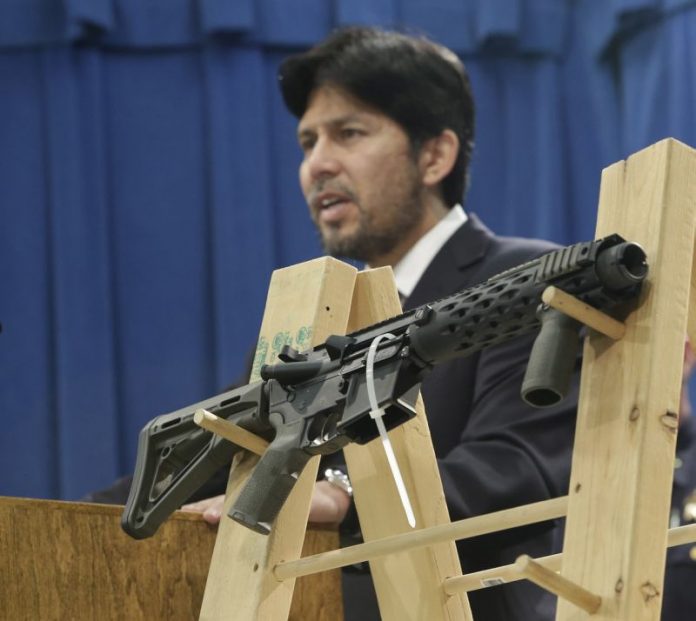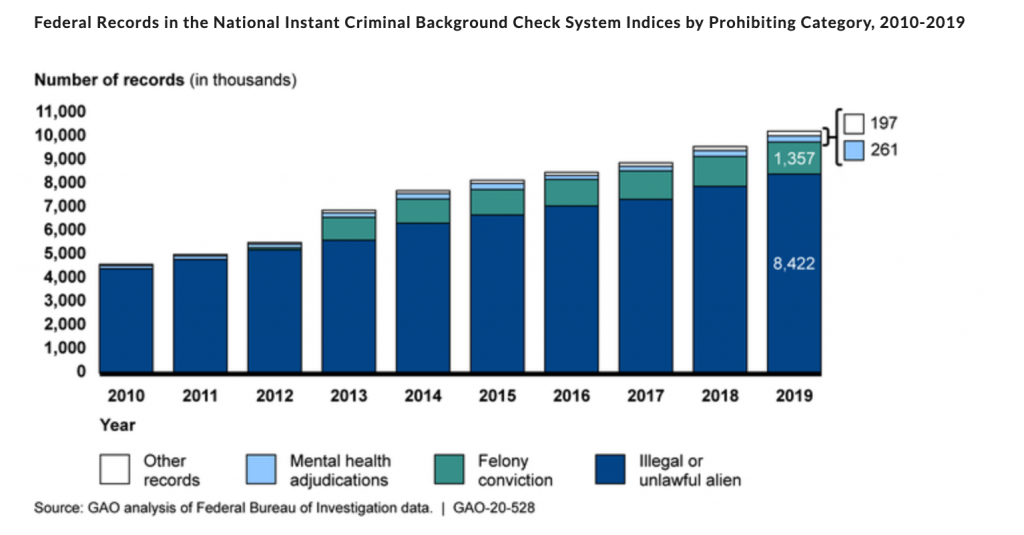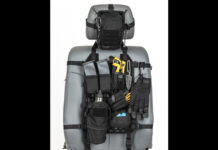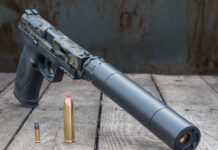
The ruling on ATF Definition of ‘Frame or Receiver’ and Identification of Firearms still has not hit the registry yet. That means the 120 time frame is still not in effect.
However the rules, definitions, and amendments themselves are on ATF.Gov/firearms/docs.
It is 364 pages.
They spent 364 pages of new regulation to try and make understanding what a frame or receiver is clearer and easier. Granted, there is bloat in the pages due to citation requirements and formatting, but still 364 pages.
There is a new novel’s worth text to try and explain that things that weren’t firearms might be firearms now, from a certain point of view.
They go on at great length about the threat posed by unserialized guns, and that is true. Unserialized weapons are a threat to citizens, law enforcement, and national security as a method of force useable by terrorists, criminals, and the unhinged. Unserialized firearms are dangerous, they are a risk.
What they fail to account for, as far as I can see, is how much greater a risk they are then the rest of guns. I see paragraph after paragraph espousing the risks of unserialized firearms in a vacuum, but none placing it in the context of unserialized firearms within a market saturated with serialized firearms.
This line on page 24 stands out, however.
At least one court has also concluded that ATF has a statutory duty pursuant to the GCA
to trace firearms to keep them out of the hands of criminals and other prohibited persons.
Blaustein & Reich, Inc. v. Buckles, 220 F. Supp. 2d 535, 537 (E.D. Va. 2002).
How seriously do the ATF pursue this statutory duty?
Individuals who submit falsified information on a form needed to purchase a firearm (e.g., do not disclose a felony conviction) may be subject to investigation and prosecution.
In fiscal 2017, the Bureau of Alcohol, Tobacco, Firearms and Explosives referred about 12,700 denied purchases to its field divisions for investigation. As of June 2018, U.S. Attorney’s Offices prosecuted 12 of these cases. [emphasis added]
ATF field divisions may send warning notices to denied persons in lieu of prosecution, but this practice varies across divisions. -GOA report on Firearm denial cases, 2017 (most recent in their records)

They dive heavily into the eTrace system and how the eTrace doesn’t work on unserialized firearms, funny that a system largely dependent on serial number doesn’t work on things without them.
But back to the background checks they are trying to associate with serial numbers.
Twelve cases… twelve went to federal prosecution. Now this doesn’t account for local prosecutions, but the ratio here is still staggering. Clearly a NICS denial isn’t ‘wrong hands’ enough to warrant the attempt at putting these people in prison in the vast majority of cases. We’re talking .01% of denials ended in a federal prosecution for violating these super serious, crime stopping, definitely effective gun control laws. [/sarc]
Yet this is the fix they are proposing. They want to add serial numbers to everything. They want to pass Universal Background Checks. They want to add all of this to stopping “gun violence” and yet they have a federal prosecution rate of .01% of under the current rules?
Why is that?

So firstly, the most common reason is they are simply not a resident who can own a firearm. Not a convicted felon, not a danger based upon past other convictions, not a mentally adjudicated individual, they might just don’t know that they can’t buy a gun. I don’t know if illegal or unlawful alien is their actual residency status or if it is their residency status plus not being a resident qualified for firearm ownership is what ‘Illegal or unlawful alien’ covers, perhaps both.
“Illegal aliens are just undocumented!“
“Oh then they should have their full residency rights, including firearms?”
“No! Illegal aliens with firearm rights? Are you crazy!?”
No more borders!
Except for guns!
Then definitely borders.
All the borders.
Anyway, it’s fun to read them dive into just how much they are hyping the eTrace reports without finishing the cycle at actual convictions. They don’t give us a number or a projected number of additional stopped events based on these changes, they just repeatedly assure us it is important.
Because PMFs lack serial numbers and other markings from a licensed
manufacturer, ATF has found it extremely difficult to successfully complete traces of
PMFs. – Pg. 26
Notice it is complete traces, not achieve convictions. There was a problem in the data cycle, not in putting criminals who had committed violence in prison.
In the NPRM, the Department noted that, with the rapid emergence of PMFs in
recent years, licensees have sought clarity from ATF on how PMFs may be accepted and
recorded. – Pg. 26
Now this is something that ATF have needed to actually provide guidance and clarification on. Of all the things they are doing in this rule change, this one actually mattered to FFLs. Who is responsible and what are the requirements of serializing a PMF (Privately Made Firearm) if it enters the commercial stream. The final ruling is that FFLs are going to be shouldering this burden if they choose to accept PMFs into their inventories.
Personally, and just speaking personally, I would avoid non-serialized PMF transfers as part of my private business. From both a safe function standpoint, I don’t know if they built it correctly and I don’t want to transfer it to another person on faith alone, and an additional labor I am required to do standpoint. An FFL could charge to serialize and could make that part of the transfer, but it is still a great deal of compliance work. It will not be a net profit generator for most FFLs without 07/02 (manufacturing) tooling.
Further down we get into the analysis of the comments.
Over 3,000 were simply “Stop Ghost Guns” and the commentators in support are basically just drones of the ‘gun = bad’ mentality without a cohesive thought through logic chain as to why. Pro-gun commentators suffer from this too, it isn’t a surprise. We will get to those. What is interesting is their use of the commentary to bolster the rule change.
Commenters in support remarked that the proposed definitions are justified given
the ease with which prohibited persons can intentionally circumvent Federal regulations
to acquire unfinished frames or receivers that can be easily converted to functional
firearms without a background check. -Pg. 57
Again, the adherence to background checks as the all powerful safety regulation gets thrown down against really hard when you look at the prosecution rate of failed background checks under the current system. By the numbers, we waste a ton of time and resources on background checks for very little gain. Roughly 99.99% wasted effort according to the 2017 federal prosecutions.
We’d be better served by keeping sentenced individuals for the length of their sentence, in instances involving violence, than we are by background checks. How many of the recently reported shootings were by early released individuals?
I also see no mention of prosecutions or enforcing the provisions that if a PMF is made by a prohibited person resources will be focused on that instead of nebulously attacking the PMF market for everyone, lawful or otherwise. I have a feeling we could deliver far more effect if we simply upped the penalties upon a conviction if the crime is committed with a PMF (assuming we enforced sentencing to completion in the first place).
Some commenters emphasized that women who are victims of domestic abuse are severely affected by the
rapid proliferation of unserialized firearms that can be easily acquired without a
background check by convicted domestic violence offenders or those subject to a
domestic violence restraining order. -Pg. 60
These are based on technically accurate capabilities rather than actual data trends, sometimes called strawman arguments.
We have not identified any increase in abuse, assaults, or homicides that are outside the parameters of the general criminality in each of those categories in the broader spectrum of the United States as a whole. In short, we can say PMFs are a problem because they are easier for the felonious possessors to acquire without a background check, but we have no trend in general criminality outside the scope of the increase and decrease of violence in the US as a whole when factoring in the other influences. Factors like the loss of public trust in officials, elected officials ‘supporting violence’ from their supporters, and the stresses generating increased crime from the lockdowns and pandemic all have influence in that general criminality. We can say, in theory, that PMFs are a problem but we have no trend to point to showing they are actually a problem. We are finding them at crimes or associated with crimes but we aren’t seeing more crime directly linked to PMFs that are trending outside the overall, all factors included increase in violence we have seen since 2020. That is just the inference they are trying to have you make because they are finding more of a popular firearm format at crimes.
They cannot say that there are more crimes because of PMFs, if they could they would.
In opposition to the rule, there were 7,000 opposed in contrast to the 3,000 in support without further reason provided in either direction. These opposition notes start on page 82. So this measure is more than twice as unpopular as it is popular by submitted comments without further explanation.
“serial number tracing serves a governmental interest in enabling law enforcement to gather vital information from recovered
firearms,” and “[b]ecause it assists law enforcement in this manner, we find its
preservation is not only a substantial but a compelling interest”). -Pg. 90-91
This part is interesting. “Vital Information” is the term I catch on here, we keep hearing that serial numbers are vital and yet I don’t see evidence being presented that their absence is significantly hindering law enforcement from prosecuting criminals. Only evidence that it is making completing traces in eTrace problematic.
The strongest argument provided against the rule, in my opinion, was the vagueness and confusing nature of “readily convertible” in their rule, and to argument that the ATF basically says, “nuh uh!”
Department Response
In light of the many cases rejecting such challenges, the Department does not
believe the term “readily” is vague. Nonetheless, to avoid any doubt, the final rule
provides additional clarity on the application of “readily.” The rule now expressly
excludes from the definitions of “frame or receiver,” a “forging, casting, printing,
extrusion, unmachined body, or similar article that has not yet reached a stage of
manufacture where it is clearly identifiable as an unfinished component part of a weapon
(e.g., unformed block of metal, liquid polymer, or other raw material).” Thus, the
definition of “readily” is not applied to items in a primordial state that are not clearly
identifiable as unfinished weapon (i.e., pistol, revolver, rifle, or shotgun) frames or
receivers. Moreover, the final rule explains that, when issuing a classification, the
Director may consider any associated templates, jigs, molds, equipment, tools,
instructions, guides, or marketing materials that are sold, distributed, or possessed with
the item or kit, or otherwise made available by the seller or distributor of the item or kit,
to the purchaser or recipient of the item or kit. The final rule further provides detailed
examples of when an unfinished frame or receiver billet, blank, or parts kit may be
considered a “frame or receiver.” For example, a partially complete billet or blank of a
frame or receiver is a “frame or receiver” when it is sold, distributed, or possessed with a
compatible jig or template, allowing a person using online instructions and common hand
tools to complete the frame or receiver efficiently, quickly, and easily “to function as a
frame or receiver,” a term which is also explained in the final rule. These revisions make
it clear that manufacturers will be able to continue to obtain unfinished billets or blanks
from their suppliers for further manufacture without requiring that the producer be
licensed, mark such items, or maintain records of production and disposition. This is
because their suppliers are not selling, distributing, or otherwise making available to their
customers any jigs, templates, or other items that allow them to be readily converted to
function as a frame or receiver. – Pg. 97-98.
The government’s response experts all over the industry stating the rule is vague is, “No, it isn’t.”
Instead of providing any firm timeframe, number of steps to completion, type or complexity of tools required for completion, or anything that could be roughly established as a measuring stick for what is and isn’t “readily” completable as a firearm, it basically states that if the parts come with directions for their safe completion, it is a firearm. Unless it isn’t. Oh and if there are tools to help complete it it is a firearm, unless it isn’t.
Example, since this is confusing as all get out. A block of aluminum with the directions for a CNC machine to complete the lower receiver would be fine. This is listed as the ‘primordial state’ of the material. But if a jig set were added to help in the various stages it might now be a firearm. If the aluminum then looks like the shape of a lower, because it was cast or machined enough, with the same completion directions attached it also is now a firearm.
It’s still vague, it’s just new vague instead of old vague.
Page 102 gets very interesting.
With these clarifications in the final rule, licensees, and the public,
can make their own determinations to identify the frame or receiver of a weapon without
an ATF classification.
We are smart enough to do it on our own! Until the ATF disagrees. That page also adds,
A “statute is not impermissibly vague simply because it does not spell out every possible factual scenario
with celestial precision.”
The statute doesn’t give us any factual scenario. It removes the only vague scenario we had, “80%” completed and now just goes with, ‘Well, if there are directions it is a gun, and if there aren’t it isn’t. Also if it kinda looks like a gun or a gun part it is, and if it doesn’t it isn’t… unless there are tools and directions, then it probably is again.
That isn’t vague though. The ATF said it isn’t.
I’m also a “huge fan” [/sarc] of the ATF policy of ‘send a sternly worded note’ to the vast majority of people who fail their background checks. It is almost as if our background check criteria is vague, and not a great indicator of actual prosecutable threat potential. But that is not under the scope of the rule change.
So this is the rule in TL;DR format. I think…
It’s a gun if you provide directions and/or tools to help make it into a functional gun with the parts. Unless its “primordial” or from Home Depot.



